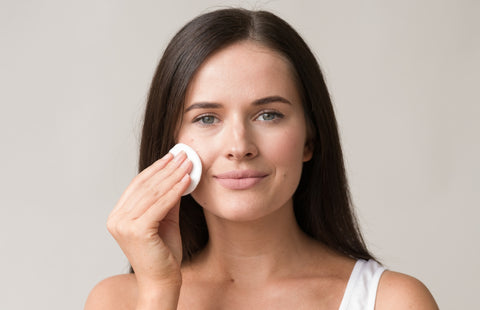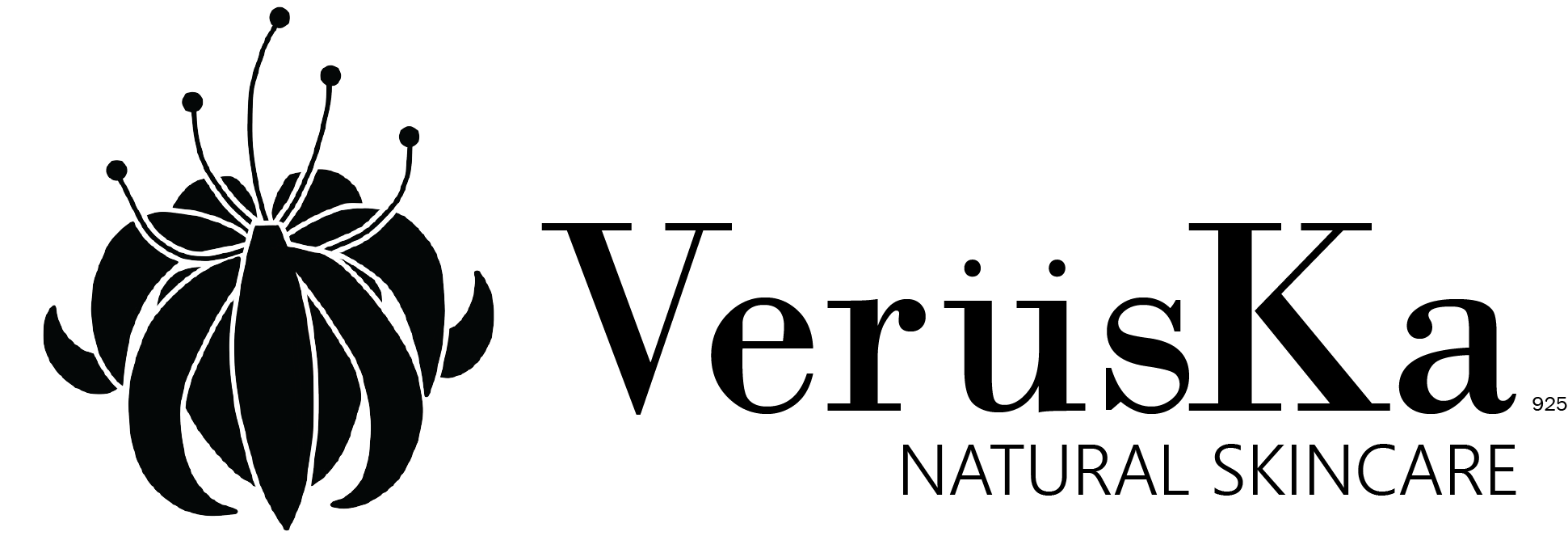
What exactly are AHAs?
Alpha-hydroxy acids (AHAs) are a class of acids originating from plants and animals that are utilized in a wide range of cosmetic products. These include anti-aging products used on a daily basis, such as serums, toners, and creams, as well as more intensive procedures such as chemical peels.
There are seven different forms of AHAs that are often found in skincare products. These are some of them:
- Citric Acid (from citrus fruits)
- Glycolic Acid (from sugar cane)
- Hydroxycaproic Acid is a type of carboxylic acid (from royal jelly)
- Hydroxycaprylic Acid is an abbreviation for Hydroxycaprylic acid (from animals)
- Lactic acid (from lactose or other carbohydrates)
- Malic acid is a type of acid that is found in (from fruits)
- Tartaric acid is a type of acid (from grapes)
There has been a lot of research done on the uses and efficacy of AHAs. However, of all the AHAs on the market, glycolic and lactic acids are the most promising and well-researched. These two AHAs are also less likely to irritate. As a result, the majority of over-the-counter (OTC) AHAs contain either glycolic or lactic acid.
AHAs are mostly used to exfoliate the skin. They can also assist in the following ways:
- Improve the appearance of surface lines and wrinkles by promoting Collagen and blood flow and correcting discoloration caused by scars and age spots.
- Prevent acne breakouts
- Improve product absorption by brightening your complexion
1. They exfoliate the skin
AHAs are primarily used to exfoliate the skin. In fact, this is the foundation for all of the other advantages that AHAs provide.
Exfoliation is the process by which the skin cells on the surface are shed. This not only removes dead skin cells, but it also allows for the generation of new skin cells.
As you get older, your natural skin cell cycle slows down, which can lead to a buildup of dead skin cells. When you have an abundance of dead skin cells, they can build up and make your complexion appear dull.
Accumulation of dead skin cells can exacerbate other skin problems, such as:
- Wrinkles
- Patches of old age
- Acne
However, not all AHAs are the same when it comes to exfoliation. The type of AHA you use determines how much exfoliation you get. As a general rule, the more AHAs a product contains, the more strong the exfoliating actions.
2. They aid in the visible brightening of the skin.
Dead skin cells are broken down when these acids exfoliate your skin. The new skin that has emerged is brighter and more radiant. AHAs containing glycolic acid can aid in the breakdown of skin cell accumulation, while products containing citric acid can brighten your skin even further.
3. They aid in the production of collagen.
Collagen is a protein-rich fiber that aids in the maintenance of plump and smooth skin. These fibers degrade as you age. Sun damage may also hasten the breakdown of collagen. As a result, the skin may become sallow and sagging.
Collagen is found in the skin's middle layer (dermis). When the top layer (epidermis) is removed, products like AHAs can begin to work on the dermis. AHAs may aid in the production of collagen by destroying old collagen fibers to make way for new ones.
4. They aid in the reduction of the appearance of surface lines and wrinkles.
Surface lines are no exception to the anti-aging effects of AHAs. According to a 2015 study, 9 out of 10 volunteers who used AHAs for three weeks saw significant improvements in overall skin texture.
However, keep in mind that AHAs only work on surface lines and wrinkles, not deeper wrinkles. Deep wrinkles can only be treated with professional fillers from a doctor, as well as other procedures such as laser resurfacing.
5. They increase blood flow to the skin.
AHAs have anti-inflammatory properties that can aid in the circulation of blood to the skin. This can help to improve the appearance of pale, dull skin. Proper blood flow also ensures that skin cells receive the nutrients they require via oxygen-rich red blood cells.
6. They aid in the reduction and correction of discoloration.
As you get older, your chances of developing skin discoloration increase. Sun exposure, for example, can cause flat brown spots known as age spots (lentigines). They most commonly appear on areas of the body that are frequently exposed to sunlight, such as your chest, hands, and face.
Discoloration can also be caused by:
- Melasma
- Acne scars caused by post-inflammatory
- Hyperpigmentation
AHAs encourage skin cell turnover. The pigmentation of new skin cells is even. Long-term use of AHAs may reduce skin discoloration by encouraging the turnover of old, discolored skin cells.
7. They aid in the treatment and prevention of acne.
For stubborn blemishes, you may be familiar with benzoyl peroxide and other acne-fighting ingredients. AHAs may also aid in the treatment and prevention of recurring acne.
Acne pimples form when your pores become clogged with a mixture of dead skin cells, oil (sebum), and bacteria. Exfoliating with AHAs can assist in loosening and removing the clog. Continued use may also help to prevent future clogs.
AHAs may also help to shrink the size of enlarged pores, which are common in acne-prone skin. Exfoliating glycolic and lactic acids can even reduce acne scars by increasing skin cell turnover. Other AHAs, such as citric and malic acids, are found in some acne treatments to help soothe inflamed skin.
AHAs aren't just for the face! AHA products can be used on other acne-prone areas, such as your backside and chest.
According to the Mayo Clinic, it can take two to three months to see significant acne improvement. It is critical to be patient as the products work to alleviate acne over time. You must also use the products consistently—skipping daily treatments causes the ingredients to take longer to work.
8. They aid in product absorption.
Aside from their own distinct benefits, AHAs can improve the efficacy of your existing products by increasing their absorption into the skin.
For example, if you have a lot of dead skin cells, your daily moisturizer will just sit on top of them instead of hydrating the new skin cells underneath. AHAs, such as glycolic acid, can penetrate this layer of dead skin cells, allowing your moisturizer to more effectively hydrate your new skin cells.
What amount of AHA is required?
The FDA recommends AHA products with an overall AHA concentration of less than 10% as a general rule. This aids in the prevention of AHA side effects.
According to the Cleveland Clinic, products containing more than 15% AHA should be avoided.
Lower AHA concentrations are found in daily-use products such as serums, toners, and moisturizers. A serum or toner, for example, could have a 5% AHA concentration.
To reduce the risk of side effects, highly concentrated products, such as glycolic acid peels, are used less frequently.
Are there any possible side effects?
If you've never used AHAs before, you might notice some minor side effects as your skin adjusts to the product.
The following are examples of temporary side effects:
- Dermatitis (eczema)
- Burning
- Itching
- Blisters
The Cleveland Clinic recommends using AHA products every other day to reduce your risk of irritation. After your skin becomes accustomed to them, you can begin using AHAs on a daily basis.
When going out in the sun, use extra caution. Because of the peeling effects of highly concentrated AHAs, your skin may be more sensitive to UV rays for up to one week after use. To avoid sunburn, wear sunscreen every day and reapply it frequently.
If you have any of the following conditions, you should consult your doctor before using this product:
- freshly shaved skin
- cuts or burns on your skin
- rosacea
- psoriasis
- eczema
Women who are pregnant or breastfeeding should consult their doctor before using this product. Only if your doctor has cleared you to use AHA products.
What is the distinction between an AHA and a BHA?
Beta-hydroxy acid is another commonly used acid in the skincare industry (BHA). BHAs, unlike AHAs, are primarily derived from a single source: salicylic acid. You may be familiar with salicylic acid as an acne-fighting ingredient, but that isn't all it can do.
Salicylic acid, like AHAs, exfoliates the skin by removing dead skin cells. This can assist in the removal of blackheads and whiteheads by unclogging pores caused by trapped dead skin cells and oil in the hair follicles.
For acne, texture improvement, and sun-related discoloration, BHAs may be just as effective as AHAs. Salicylic acid is also less irritating, making it a better choice if you have sensitive skin.
If you have more than one skin concern, you could try both AHAs and BHAs, but proceed with caution. AHAs may be better suited to age-related skin concerns, whereas BHAs may be better suited to sensitive, acne-prone skin. For the latter, consider using BHAs on a daily basis, such as a salicylic acid toner, followed by a weekly AHA-containing skin peel for deeper exfoliation.
When using multiple products for your skin, it is important to gradually incorporate them into your regimen. Using too many AHAs, BHAs, and chemicals at once can irritate the skin. As a result, wrinkles, acne, and other skin issues may become more visible.
In conclusion
If you're looking for significant exfoliation, AHAs might be the right products for you. You can exfoliate your skin on a daily basis with AHA-containing serums, toners, and creams, or you can do a more intense peel treatment once or twice a week.
Because of their powerful effects, AHAs are among the most researched beauty products, but they aren't for everyone. If you have pre-existing skin conditions, consult your dermatologist or a skin care specialist before using these products. They can advise you on the best AHA to use based on your skin type and skin care objectives.
Over-the-counter AHAs do not have to be scientifically proven to be effective before being placed on the market, so only buy from manufacturers you know and trust. You could also visit your doctor's office and get a professional strength peel.







